- Learning time
- 5 minutes
- First play time
- 15 minutes
Hurlyburly
Designed by: Rikki Tahta,Verbena Tahta
In Hurlyburly, everyone is building a tower from bits of card, and the first player to reach four levels will be the winner!
Except of course it’s not quite that simple. Because the tower needs to be standing at the start of your turn, and the moment you complete it every other player will be catapulting wooden blocks to knock it down…
Each player starts with a single-level tower made from two walls and a roof. You also have a basic catapult (a bendable card in a stand) and a single block. On your turn you have several options to choose from, but can only take one: build fast, and add two levels to your tower, each supported by a single wall. Build strong, adding only one level, but supported by two walls. Protect your tower with sandbags (also made from card) around the outside of it, reinforce your catapult by adding extra thickness to it (very necessary to flick further!) gather blocks equal to the number of levels in your tower, or finally – the nasty yet joyful heart of Hurlyburly – attack the other player’s towers by catapulting blocks at them – as many as you want from your supply.
That’s the entire game right there, but if the list above started to feel a little procedural, the experience of playing Hurlyburly is the opposite – most decisions are fast and quickly implemented, with the sole exception being attacking, which is kinda why everyone wants to play anyway. There is something inherently funny about a tiny wooden block traversing the air to obliterate someone’s flimsy construction – and if you’re knocked down, you’re not out of the game but can start rebuilding while opponents focus on each other. If you’re the culprit in the knocking-down, you get to claim some of the imploded bits as a reward – and add them to your own tower!
If your four-level tower is achieved, and then survives all comers and still stands at the start of your subsequent turn, you will be crowned King or Queen of the tiny, crazy, warlike lunatics. Well done!
Joe says
I love the 'cobbled together out of bits we found in a drawer' look and feel of Hurly Burly. Rikki Tahta's designs. while very different from one another, have real sparks of genius and innovation, and this is no exception. Great catapulting fun - it deserves a wider release. I can even imagine a gussied-up Hasbro edition of Hurly Burly being advertised on TV: "You bombarded my castle!".
The guru's verdict

-
Take That!
Take That!
Very high
-
Fidget Factor!
Fidget Factor!
Very low
-
Brain Burn!
Brain Burn!
Decisions are to be made, but the game is exceedingly light.
-
Again Again!
Again Again!
You probably wouldn't want to play it night after night, but Hurlyburly's breezy rules and playtime - not to mention the hilarity of the catapulting - do make it appealing for revisits.





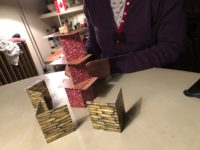


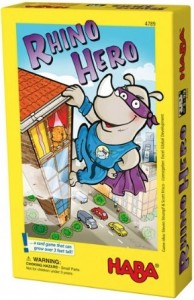
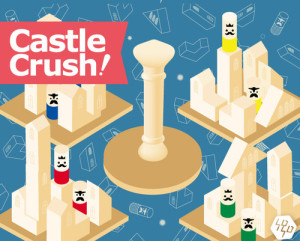
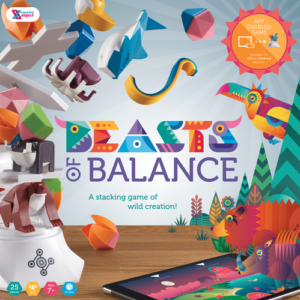

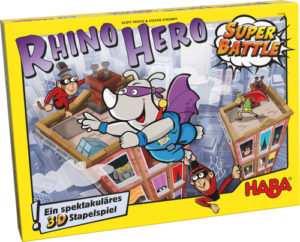
Sam says
Hurlyburly is a prime example of why ideas define a game over any other metric. Sometimes those epic big-box publications are worth the learning curve because out of them rises a fantastic narrative that everyone can be invested in: although Twilight Imperium does take all day to play, I do exit the experience - assuming I went into it off the back of a good night's sleep - feeling like it was worthwhile. But some 'big games' seem to bloat to the point where cognitive overload starts to submerge the point of gaming in the first place - which is to have fun. Obviously fun comes in different packages, but for many of us an experience which doesn't overwhelm you with rules is a great start: follow that up with a fast-moving, highly interactive and - I mean this in the best possible way - very silly escapade, and aligned with the brief playtime Hurlyburly becomes something you can play again and again and always find it speckled with memorable moments.